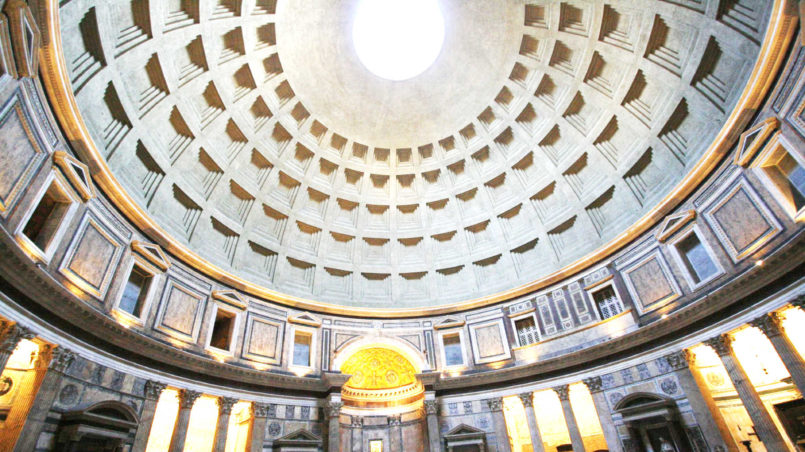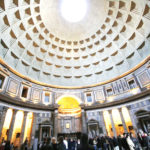Anarchy: The Beginnings of Rulership

The end of autonomy and the step from the ‘we’ to the self paradoxically occurred simultaneously
The Neolithic Revolution brought tremendous spiritual and cultural advances, removing us from the child-like magical entanglement in our environment and turning us into individuals rather than half-anonymous group members. On the one hand, it was a grandiose soar, necessary impetus, and basis for everything we have since produced in terms of civilization’s achievements but, on the other hand, also a costly fall from paradise.
Several developments necessitated and reinforced each other:
Settlement and sense of ownership
Nomads burden themselves with as little as possible and can replace the majority of everyday objects at any time. Hence, nothing is irreplaceable and envy for possessions practically impossible. In settling down, however, the opportunity arose to accumulate more things than were essential to survival, to fence off areas for one’s own exclusive use, to build storage cellars.
Raids
This amassing of working time, which could simply be taken away and consumed, or exchanged for anything else, was, of course, a huge temptation. While even among nomadic tribes, there have always been feuds and warlike actions, the brutality with which people now clashed had been unheard of until this time. What had been painstakingly produced came to be both attacked and defended ferociously.
Agriculture
In farming, you have to plan ahead. While the notion of time prior to agriculture did not go beyond the idea of a cyclically recurrent moment, now man constantly had an eye on the future, pursuing some objective, thinking progressively. Past achievements and future rewards were suddenly the central issues.
Religion
The emergence of numerous places of worship also shows that the world and even the gods were being made subject to control via rituals. And yet, paradoxically, it was about showing humility at the same time, since the new human was painfully aware of his mortality. Whether organized mass rituals were the first step that tied people to places, perhaps giving rise to agriculture through the need for psychoactive plants or vice versa, is probably the wrong question. Rather, both can be traced back to the same inner change.
Ego
In this period the first heroic sagas emerge, the birth of the idea that man can manipulate his environment and forge his own destiny. It was the ego which gave us the opportunity for moral responsibility in the first place, but it came with fantasies of omnipotence with which we still struggle today. While we had been at the mercy of nature before, we now conquered and subdued the earth, diverted rivers, cut forests, and determined what should grow where. We also assumed the right to catch, confine and force animals to work, as we could no longer follow the herds to hunt and since fieldwork was so much easier using the power of an animal.
Hierarchy
However, even though we all began to see our role in the world differently now, not everybody could be a hero, nor did everybody’s spiritual transformation occur at the same pace. For the gifted, the wise, and artists the emergence of larger communities created a new and fruitful situation.
Cruelty
Of course, it did not take long for this growing intellectual superiority of the upper classes to bring about a new misery: simple people, in the rulers’ eyes, turned into utilities, they were not perceived as people with a claim to equal dignity or rights but mere servants and workers in much the same way mankind had started to look down on animals. With the rising greed of this caste, the exhilarating court life inevitably stood in sharp contrast to the lives of hosts of propertyless, who – enslaved by poverty or actual serfdom – had to generate the basis for their rulers’ wealth
Dynasties
While the initial kings, who were allowed to govern for only a year and then had to die, were sacrificed to the bloodthirsty but nurturing mother deity, it quickly became a mere symbolic sacrifice (or a substitute sacrifice), so that the king not only survived but also could introduce a succession. Religion was also reformed accordingly: the new Pantheon was organized like a court and very secularly oriented.
Money
With more goods and the need for rare raw materials, the trade network became increasingly extensive and dense. The need for a universal medium of exchange was given. What started out as an ingenious concept, furthering our ability to think abstractly, also allowed for the accumulation of resources in an unprecedented magnitude, as well as, soon after, the invention of interest rates, taxes, and a militarization hitherto unthinkable – which brings us to the beginning of written down history, because the first dated records tell of conquests and battles.
Of course, all these things did not happen everywhere at the same time but rather stretched over centuries to millennia. But they occurred almost uniformly in many places and perhaps show that ruthlessness and megalomania were a necessary vehicle on the path to culture.
We have all the knowledge and resources to redefine our role once more – towards peace, tranquility, humour, love, generosity, and care for each other and our planet. Yet we choose turmoil, defiance, and greed, to the bitter end.
Credits
| Image | Title | Author | License |
|---|---|---|---|
 |
Internal_Pantheon_Light. | Jay Reed | CC BY-SA 2.0 |
